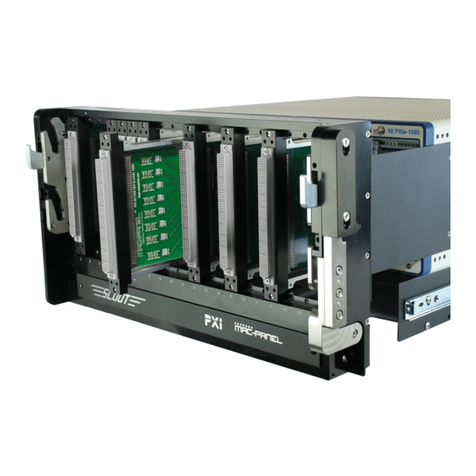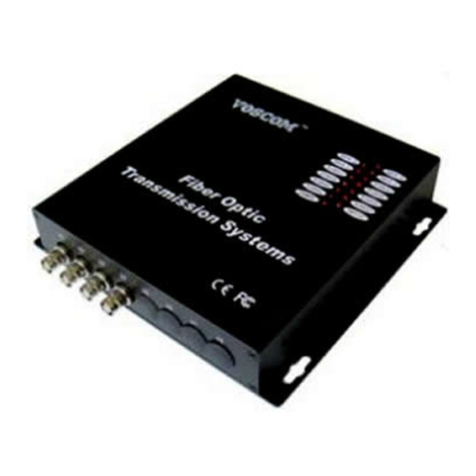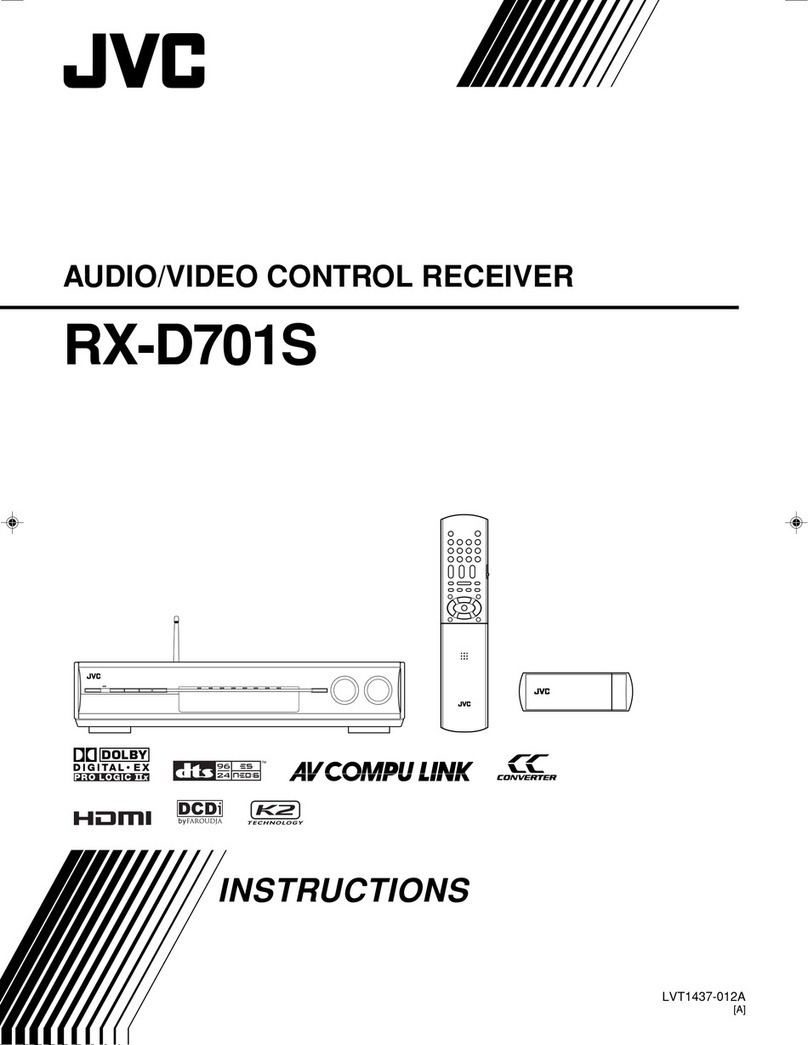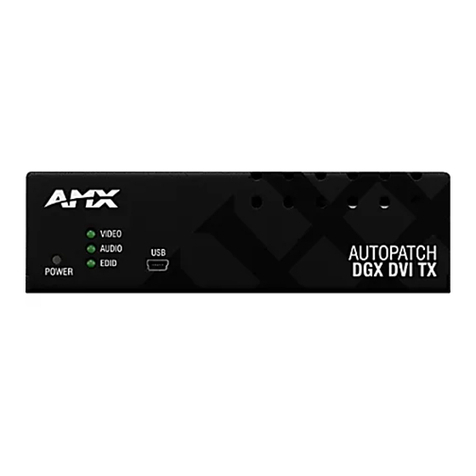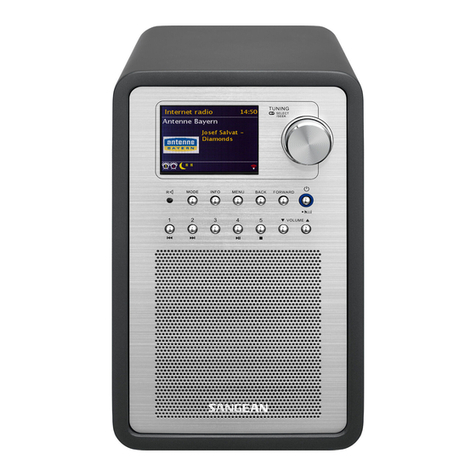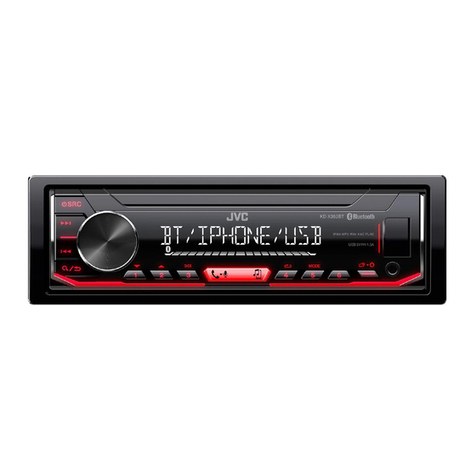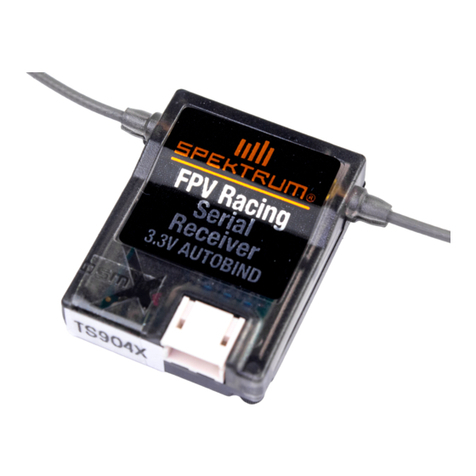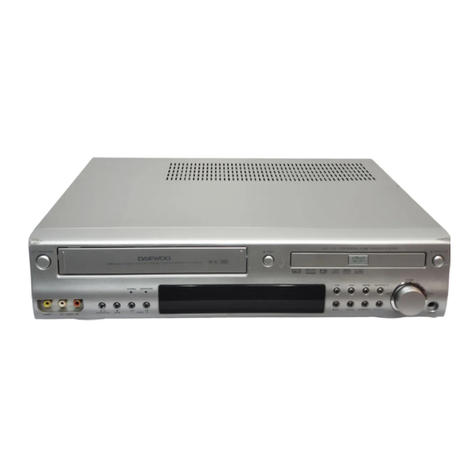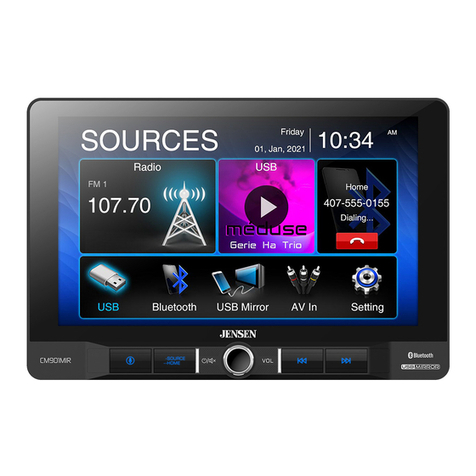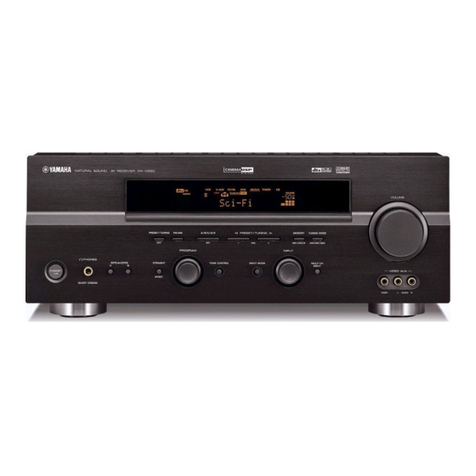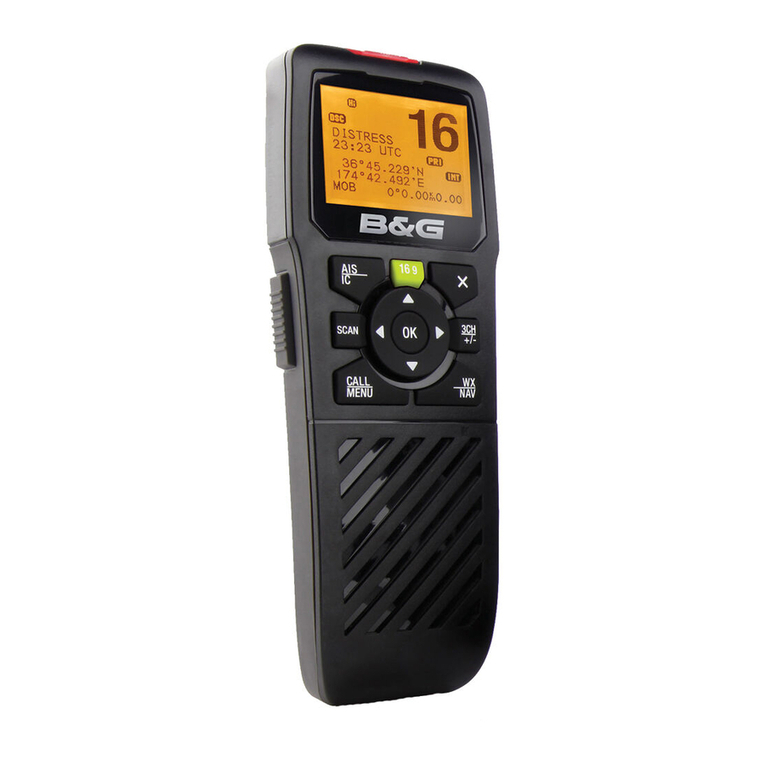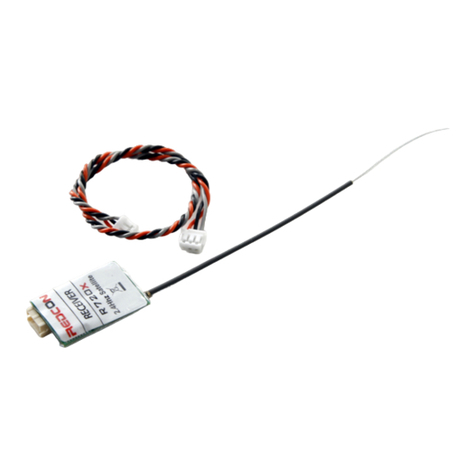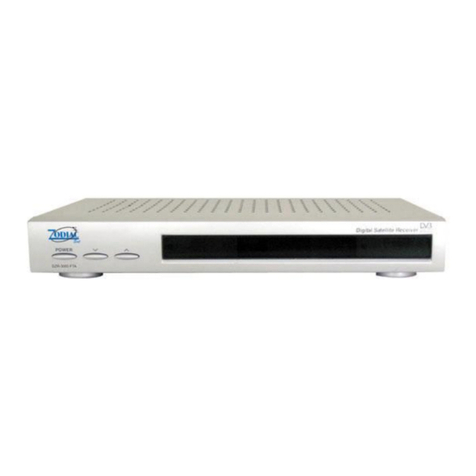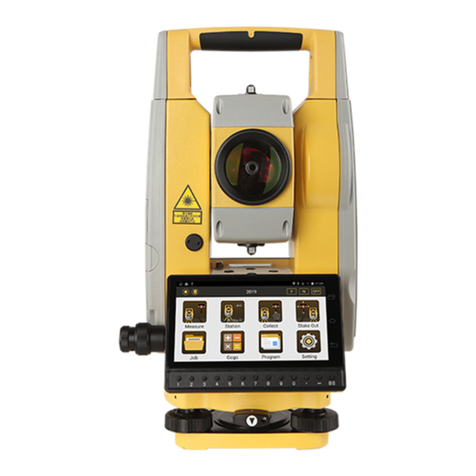Sur-Gard SG-MLR2000 User manual

Installation
Manual
version 1.4
WARNING: This manual contains information on limitations regarding
product use and function and information on the limitations as to
liability of the manufacturer. The entire manual should be carefully read.
Sur-Gard MLR2000
Virtual Network Receiver
firealarmresources.com

FCC Compliance Statement
CAUTION: Changes or modifications not expressly approved by Digital Security Controls Ltd. could void
your authority to use this equipment.
This equipment has been tested and found to comply with the limits for a Class B digital device, pursuant
to Part 15 of the FCC Rules. These limits are designed to provide reasonable protection against harmful
interference in a residential installation. This equipment generates, uses and can radiate radio frequency
energy and, if not installed and used in accordance with the instructions, may cause harmful interference to
radio communications. However, there is no guarantee that interference will not occur in a particular
installation. If this equipment does cause harmful interference to radio or television reception, which can
be determined by turning the equipment off and on, the user is encouraged to try to correct the interference
by one or more of the following measures:
Re-orient the receiving antenna.
Increase the separation between the equipment and receiver.
Connect the equipment into an outlet on a circuit different from that to which the receiver is connected.
Consult the dealer or an experienced radio/television technician for help.
The user may find the following booklet prepared by the FCC useful: “How to Identify and Resolve
Radio/Television Interference Problems”. This booklet is available from the U.S. Government Printing
Office, Washington D.C. 20402, Stock # 004-000-00345-4.
IMPORTANT INFORMATION
This equipment complies with Part 68 of the FCC Rules. On the side of this equipment is a label that con-
tains, among other information, the FCC registration number and ringer equivalence number (REN) for
this equipment. If requested, this number must be provided to the Telephone Company.
FCC Registration Number: 1VDCAN-25404-AL-N
REN: 0.2B
USOC Jack: RJ11C
Telephone Connection Requirements
A plug and jack used to connect this equipment to the premises wiring and telephone network must com-
ply with the applicable FCC Part 68 rules and requirements adopted by the ACTA. A compliant telephone
cord and modular plug is provided with this product. It is designed to be connected to a compatible modu-
lar jack that is also compliant. See installation instructions for details.
Ringer Equivalence Number (REN) The REN is used to determine the number of devices that may be
connected to a telephone line. Excessive RENs on a telephone line may result in the devices not ringing in
response to an incoming call. In most but not all areas, the sum of RENs should not exceed five (5.0). To
be certain of the number of devices that may be connected to a line, as determined by the total RENs, con-
tact the local Telephone Company. For products approved after July 23, 2001, the REN for this product is
part of the product identifier that has the format
US: AAAEQ##TXXXX. The digits represented by ## are the REN without a decimal point (e.g., 03 is a
REN of 0.3). For earlier products, the REN is separately shown on the label.
Incidence of Harm If this equipment Sur-Gard MLR2000 causes harm to the telephone network, the tele-
phone company will notify you in advance that temporary discontinuance of service may be required. But
if advance notice is not practical, the Telephone Company will notify the customer as soon as possible.
Also, you will be advised of your right to file a complaint with the FCC if you believe it is necessary.
Changes in Telephone Company Equipment or Facilities The Telephone Company may make changes
in its facilities, equipment, operations or procedures that could affect the operation of the equipment. If
this happens the Telephone Company will provide advance notice in order for you to make necessary mod-
ifications to maintain uninterrupted service.
Equipment Maintenance Facility If trouble is experienced with this equipment Sur-Gard MLR2000, for
repair or warranty information, please contact the facility indicated below. If the equipment is causing
harm to the telephone network, the Telephone Company may request that you disconnect the equipment
until the problem is solved. This equipment is of a type that is not intended to be repaired by the end user.
Simplex Time Recorder Co. 100 Simplex Drive, Westminster MA 01441-0001 USA, Tel: (978) 731-2500
Additional Information Connection to party line service is subject to state tariffs. Contact the state public
utility commission, public service commission or corporation commission for information.
If your home has specially wired alarm equipment connected to the telephone line, ensure the installation
of this equipment Sur-Gard MLR2000 does not disable your alarm equipment. If you have questions about
what will disable alarm equipment, consult your telephone company or a qualified installer.
Industry Canada Statement
IC: 160A-MLR2000
NOTICE: This equipment meets the applicable Industry Canada Terminal Equipment Techni-
cal Specifications. This is confirmed by the registration number. The abbreviation, IC, before
the registration number signifies that registration was performed based on a Declaration of
Conformity indicating that Industry Canada technical specifications were met. It does not
imply that Industry Canada approved the equipment.
NOTICE: The Ringer Equivalence Number (REN) for this terminal is 01. The REN
assigned to each terminal equipment provides an indication of the maximum number of ter-
minals allowed to be connected to a telephone interface. The termination on an interface
may consist of any combination of devices subject only to the requirement that the sum of
the Ringer Equivalence Numbers of all the devices does not exceed five.
Telephone
Computer
Telephone
Telephone
Fax Machine
Alarm Dialing
Equipment
RJ-31X
Jack Unused
RJ-11 Jack
Telephone
Line
Network
Service
Provider's
Facilities
Customer Premises Equipment and Wiring
Unused
RJ-11 Jack
Network
Demarcation
Point Answering
System
firealarmresources.com

Table of Contents
Section 1 - Introduction............................................. 1
1.1 CPM2000 ................................................................ 1
1.2 DRL2000 ................................................................. 1
1.3 Power and Supervision............................................. 1
1.4 CPM2000 Outputs/ Inputs ....................................... 1
1.5 System Overview...................................................... 2
1.6 Virtual Receiver Architecture .................................... 2
1.7 Number of Line Cards Supported ............................. 2
1.8 Redundancy............................................................. 2
1.9 Approvals ................................................................ 2
1.10 Virtual Connectivity ................................................. 2
1.11 Internal 10B2 Ethernet............................................. 2
Section 2 - Quick Start ............................................... 3
2.1 Receiver Setup and Operation.................................. 3
2.2 Bench Testing .......................................................... 9
Section 3 - Installation............................................. 10
3.1 Dimensions............................................................ 10
3.2 Definity DNIS ......................................................... 10
3.3 Mounting the Receiver........................................... 10
3.4 Printer Connections ............................................... 10
3.5 Computer Connections.......................................... 10
3.6 Telephone Line Connections .................................. 10
3.7 Grounding............................................................. 10
3.8 Power Supply......................................................... 10
3.9 Battery Charging Current....................................... 10
3.10 Removing and Installing System Components ........ 10
3.11 To Install a Line Card Module ................................. 10
Section 4 - DRL2000 Digital Receiver Line Card .... 11
4.1 General Information............................................... 11
4.2 DRL2000 Features.................................................. 11
4.3 Installation............................................................. 11
4.4 DRL2000 Controls.................................................. 11
Section 5 - DRL2000 Operating Mode..................... 12
5.1 DRL2000 Standby Mode ........................................ 12
5.2 DRL2000 Cold Start-up.......................................... 12
5.3 Communications in Progress.................................. 12
Section 6 - Profiles .................................................. 13
6.1 Introduction........................................................... 13
6.2 A.H.S. (Automatic Handshake Selection) ................ 14
6.3 Static Options: [00] - [2F] ....................................... 14
6.4 Dynamic Options: [30] - [FF].................................. 16
Section 7 - DRL2000 Communication Formats....... 23
7.1 Common Formats.................................................. 23
7.2 Sur-Gard DTMF Formats......................................... 23
7.3 Acron Format......................................................... 23
7.4 Ademco Contact ID................................................23
7.5 Ademco Express .....................................................25
7.6 Ademco Super Fast (High Speed Format)................25
7.7 FBI Super Fast Format .............................................25
7.8 ITI Format...............................................................25
7.9 ITI Sensor Library ....................................................25
7.10 Modem II, Modem IIE, Modem IIIa² and
BFSK Formats .........................................................26
7.11 SIA FSK ..................................................................26
7.12 Silent Knight FSK1, FSK2 ........................................26
7.13 Silent Knight FSK2 Protocol ....................................26
7.14 Sescoa Super Speed ...............................................27
7.15 DRL2000 Predefined Library Decoding and Event
Codes Table27
Section 8 - CPM2000 Central Processing Module... 29
8.1 General Information...............................................29
8.2 Features .................................................................29
8.3 CPM2000 Controls.................................................29
Section 9 - CPM2000 Wiring Diagram ..................... 30
9.1 Loss of Socket/Automation.....................................30
9.2 CPM Redundancy...................................................30
9.3 CPM Restoral .........................................................30
Section 10 - MLR2000 Computer Interface ............. 31
10.1 Virtual connectivity.................................................31
10.2 Automation Mode..................................................31
10.3 TCP/IP Ports............................................................31
10.4 Client Side Connects ..............................................31
10.5 Stream Packet Structure .........................................31
10.6 Status Addressing...................................................31
10.7 Overview of Communication ..................................31
10.8 Console spcifies which SG Automation to
Supervise................................................................32
Section 11 - PSU2000 Power supply Module .......... 35
Section 12 - Automation Protocols ......................... 36
12.1 Data Byte protocol..................................................36
12.2 Acknowledgment of the Signal ..............................36
Section 13 - Detailed Description of Computers ... 37
13.1 COM Responses .....................................................37
13.2 Automation Absent...............................................37
Appendix A - DRL2000 Communication Formats...........38
Appendix B - Decimal - HEX - Binary Conversion Chart.39
Appendix C - ASCII Character Chart..............................40
Appendix D - Printer Words: Options [60-6F]................41
Appendix E - Panels Compatibility List ..........................43
firealarmresources.com

NOTE:
firealarmresources.com

1
Section 1 - Introduction
The MLR2000 is a Multi-Line, Multi-Format Digital Receiver for
commercial fire and burglary. The basic unit consists of 60 indi-
vidual line-cards (DRL2000) connected to a dual redundant cen-
tral resource, router and protocol converter (CPM2000). The
MLR2000 includes many features, especially high bandwidth
internal buses and high bandwidth external connections to
allow traditional network philosophies to be observed for the
first time on a central station receiver. The MLR2000 can
decode a variety of popular and widely used communication
formats. Refer to Appendix A, DRL2000 Communication For-
mats for a list of the available communication protocols.
The MLR2000's real-time clock and calendar 'stamps' all infor-
mation received with the time and date, and all information
may be printed or forwarded to a computer. To ensure security,
adjustment of the clock, calendar and other programming is
protected by password codes.
1.1 CPM2000
The CPM2000 Central Processing Module oversees opera-
tion of the receivers. Along with its built-in keypad and
LCD message screen, the CPM2000 features TCP/IP, two
parallel printers, one serial printer and two serial computer
interface capability.
1.2 DRL2000
Each DRL2000 module can monitor two telephone lines.
The line card module is equipped with a 256-event non-
volatile memory buffer to record events and correspond-
ing telephone numbers. Caller Source capability is built-in
and telephone numbers can be printed out, sent to auto-
mation and stored in memory. Events and information
stored in memory can be printed at any time. Each line
card also features flash EPROM uploads through the
Debug port for software upgrades or options program-
ming.
1.3 Power and Supervision
1.3.1 Power
The MLR2000 power supplies inputs are 120 Vac at 10A,
60 Hz. Each AC power supply supplies a nominal 28 Vdc
+/-5% power. The receiver is equipped with 24V
rechargeable stand-by battery connections at 160 Ahr.
and an automatic battery charger. Provision is made for an
internal battery pack for temporary use. User supplied
batteries may be used externally but must be fused and
connected to 10-32 lugs supplied via a stud termination.
Full power operation is .5 Amps per line and 1 Amp per
CPM at 28 Vdc nominal. All elements have extensive
power down capabilities and are implemented in CMOS
logic.
1.3.2 Supervision
The stand-by battery voltage and connections are super-
vised. The Line Cards are also continuously supervised to
ensure uninterrupted communication with the CPM2000.
Any trouble conditions are reported on the LCD screens
and sent to the printer and the computer.
The DRL2000 Line Card Module also verifies communica-
tions with the CPM2000. In the event of a malfunction,
the operator will be advised with a visual indication and
the Line Cards will continue to function. Each line card will
continue to receive information.
The printer is supervised for off-line, paper out and other
trouble conditions. The communication link to the com-
puter through the RS232 ports is monitored by the super-
visory 'heartbeat' test transmissions.
1.3.3 Compatibility
Central station automation software packages such as:
• MAS • DICE • SIMS II • GENESYS • S.I.S. • IBS
•MicroKey
support the MLR2000 Sur-Gard interface.
Refer to automation software specifications for compati-
bility.
NOTES: Automation connections are considered
supplementary per UL864 Listing. Compatibility
with the automation software in a system used at a
central station is intended to be handled under a
separate UL1981 software and/or site certification
evaluation.
1.4 CPM2000 Outputs/ Inputs
• The CPM2000 features four switched-negative
(PGMOUT1 is activated when automation fails) outputs,
two relay outputs and four inputs.
1.5 System Overview
• Patented Caller Identification (Call Display) capability
• Patent Pending DNIS Identification
• nonvolatile RAM on each DRL2000 line card module for
programming and event buffer.
• Fast Ethernet communication between line-cards and
CPM
• Flash download for software upgrades
• Up to 64 different options set (profiles per line)
• Patented virtual configurations
• 3/1, 4/2 formats with or without parity, 4/1 without par-
ity at 10, 14, 20, or 40 baud
• 4/1, 4/2, 4/3, and 4/3 DTMF formats
• Optional* formats: 3-2, 4/1, 4/2 extended
• ACRON DTMF format
• Contact ID (DTMF) format
• Adcor 20 baud
• Super fast or high speed DTMF format, with or without
parity
• DTMF 4/1 express format (optional)
• DTMF 4/2 express format
• FBI super fast format with or without parity
• Radionics Modem II, Modem IIE, Modem IIIa2 and BFSK
formats
• SIA format: 110 and 300 baud, tone and data acknowl-
edgement
• SK FSK0, FSK1, FSK2
• Any handshake frequencies by increment of 100 Hz
from 100 Hz to 2300 HZ, Dual Tone, SIA FSK, Modem II
and ITI selected by configuration commands
• Up to 8 different handshakes per profile.
• Large, easy to read 2-line, 16-characters-per-line, LCD
(Liquid Crystal Display) screen
• All modules function individually to help ensure uninter-
rupted operation during hardware or software upgrades
• Inputs on CPM2000 for UPS supervisory
• 255 lines maximum per receiver
• 256-event memory buffer on each individual line card
•Real-timeclock
• CPM2000 features 32-bit micro-controller
• Two parallel printer port; three serial RS232 ports and
one 10 BaseT connection.
• Programmable serial ports configuration
• Programmable System Functions: Computer and printer
• Fast transmission of multiple alarms to the computer
and printer to ensure operator's quick response
*All formats noted as optional are selected using configuration commands.
firealarmresources.com

2
• Continuous verification of the computer-receiver links
with the 'heartbeat' function
• Switched-negative outputs on CPM2000 (special appli-
cations)
• AC-lost detection and stand-by battery supervision
• Low battery detection and automatic low battery dis-
connect to prevent deep-discharge damage to battery
• Operator Acknowledge
• Telephone Line Supervision
1.6 Virtual Receiver Architecture
The most novel feature of the DRL2000 is the ability to
use Telco information delivered as a DNIS (dialed number
identification service) to allow the Sur-Gard expert format
identification system to option on the fly each received call
to eliminate dedicated line pool hardware. Instead the
DNIS allows call up options which set up virtual line pools
to identify security formats and extend account numbers.
Standard dialed number identification is supported up to
10 digits.
Each dialed number should be assigned to a virtual
receiver. Each dialed number would have formerly been a
line pool on conventional line-cards.
1.7 Number of Line Cards Supported
The system will support a maximum of 255 line-cards con-
currently connected. Optional hubs will be required for
backplane connectivity in installations beyond 5 shelves.
1.8 Redundancy
The MLR2000 has a main power supply module for side A
and for side B, and an optional stand-by power supply per
rack. Additional 10B2 Ethernet is available as a backup B
side. This and the ability to mount an optional second
CPM2000 controller will allow for seamless system redun-
dancy in maximum configuration. In practical terms this
means that any line card may fail and not affect system
performance ; and with redundant CPM's the B unit will
take up where the A unit failed with a loss of no more
than 30 seconds. External networking components would
necessarily be duplicated to take full advantage of this
configuration.
1.9 Approvals
1.9.1 Industry Approvals
The MLR2000 in redundant configuration is listed under
the following UL standards:
• UL 864 Control Units for Fire-Protective Signaling Sys-
tems
• UL 1610 Central Station Burglar Alarm Units
This equipment should be installed in accordance
with the requirements of NFPA72, NFPA70 and
UL827.
1.9.2 System Connectivity
The system may have two identical CPMs both connected
to internal resources. Internal connections are A and B
side 28 V power and A and B side 10B2 Ethernet. Addi-
tional internal connections are power monitoring services
on the primary rack. External connections are two parallel
printer and three serial ports. The serial ports are intended
primarily for debug applications but may be used for fall-
back automation outputs (optional). The primary automa-
tion connection is via 10BT Ethernet connection. Again if
redundant CPM's are used the external network compo-
nents must be duplicated to allow for full redundancy.
1.9.3 Automation Mode
In automation mode it is expected that the primary con-
nection is via TCP/IP networking on the 10BT Ethernet
connection. A menu on the CPM2000 will prompt the
user for the IP address setup and port setup. Once the
configuration management port is set up, all other
options and setups may be done via a Telnet session or
the Sur-Gard Console.
1.9.4 UL Manual Mode
For UL manual mode, each event will activate the internal
buzzer to be acknowledged manually. Each event will be
sent automatically to all connected printers.
NOTE: For central station applications the signaling
performance of each dact shall be manually tracked.
Failure to receive a signal from a dact over a 24-hour
period shall be handled as a trouble signal.
1.10 Virtual Connectivity
Each receiver has one IP address and a number of associ-
ated ports. Internal socket programming uses specific
ports for expected tasks. The MLR2000 is the listener.
1.10.1Configuration Management - Sur-Gard Con-
figuration Port 1024
A tool is provided for NT 4 + or Windows 9x/2000/XP
environments which provides graphical style menu for
configuration management. Additional features are stor-
age of virtual receiver setups, formats conversion table
and configuration wizards.
1.10.2Status Addressing
Line card status will be reported via physical addressing.
This will be assigned by shelf and slot number. All device
status information is in Sur-Gard format. The reporting of
status on this port, automation output and printer will
relate to physical addressing.
1.10.3Automation input/output (Port 1025, 1026)
Traditional automation communication will be provided
via a minimum of two ports. The primary port is Sur-Gard
standard output and provides Sur-Gard standard automa-
tion output.
Optional secondary automation communication will be
provided to map to proprietary types. It is expected that
named virtual receiver types will be mapped to this out-
put. In addition two way automation commands may be
supported on this port.
1.11 Internal 10B2 Ethernet
Internal Ethernet is not standard TCP/IP instead it has allo-
cated proprietary type per Internet standards. Full physical
10B2 requirements are met allowing approved segment
interconnects to be used including hubs, optical transceiv-
ers and wan interconnects (wan interconnects preclude
trap and capture commands).
firealarmresources.com

3
Section 2 - Quick Start
2.1 Receiver Setup and Operation
2.1.1 Unpacking
Carefully unpack the receiver and inspect for shipping
damage. If there is any apparent damage, notify the car-
rier immediately.
2.1.2 Ethernet Connections
NOTES: Be sure to be properly grounded.
• Take a 50 ohm coaxial cable and connect one end to the
BNC connector (ETHERNET A) of the CPM2000. The
other end of the coaxial cable should be connected to
the BNC connector (ENET A IN) of the backplane.
• Take a 50-ohm coaxial cable and connect one end to
the BNC connector (ETHERNET B) of the CPM2000. The
other end of the coaxial cable should be connected to
the BNC connector (ENET B IN) of the backplane.
• Make sure that there are 50 ohm BNC terminators on
the other end of the T Connectors of the CPM2000
labelled ETHERNET A AND B.
• Make sure that there are 50 ohm BNC terminators con-
nected on the BNC terminals marked ENET A OUT and
ENET B OUT of the backplane. (This should be already
done.)
Figure 1, 60 Line Cards Configuration
firealarmresources.com

4
Figure 2, 72 Line Cards Configuration (Expansion cabinet)
firealarmresources.com

5
2.1.3 Power Cable Connections
• Take the power cable for the CPM2000 and connect the
labelled wire to the designated terminal on the back-
plane. Take the other end of the power cable and con-
nect it to the power connector on the CPM2000.
• Take the power cables (10 gage) and connect one end
to the power terminals of the backplane marked PWR-
GND (black cable) and +28 VDC A (red cable). Take the
other end of the power cables and connect to a 28 VDC
power supply (make sure power is OFF).
Figure 3, 60 Line Cards Configuration
MAN
REC COL PAR PAR
PORT 1
MAN
REC COL PAR PAR
PORT 2
MAN
REC COL PAR PAR
PORT 3
MAN
REC COL PAR PAR
PORT 4
MAN
REC COL PAR PAR
PORT A
PWR JAM ACT
Fan Tray
120V/60Hz/10A
NOTE: Battery wiring
should be run in conduit
and batteries should be
housed in a separate UL
Listed enclosure.
Recommended batteries:
2x12V / 140-190Ah
4 hours backup batteries
used in conjunction with
power generator.
Model:INTERSTATE SG8D.
NOTE: AC supply cords
shall be run in conduit
or be provided with
equivalent mechanical
protection.
WARNING: To reduce the
risk of electric shock, this
product is provided with a
grounding type power
supply cord. Connect
product to a grounded
receptacle.
POWER B
BATTERY
POWER A
++
--
+
-
+
-
Non Power
Limited Circuit
MAN
REC COL PAR PAR
PORT 1
MAN
REC COL PAR PAR
PORT 2
MAN
REC COL PAR PAR
PORT 3
MAN
RECCOLPARPAR
PORT 4
MAN
REC COL PAR PAR
PORT A
PWR JAM ACT
Ethernet Repeater B
Ethernet Repeater A
firealarmresources.com

6
Figure 4, 72 Line Cards Configuration (Expansion Cabinet)
MAN
REC COL PAR PAR
PORT 1
MAN
REC COL PAR PAR
PORT 2
MAN
REC COL PAR PAR
PORT 3
MAN
REC COL PAR PAR
PORT 4
MAN
REC COL PAR PAR
PORT A
PWR JAM ACT
POWER B
Fan Tray
120V/60Hz/10A
NOTE: Battery wiring
should be run in conduit
and batteries should be
housed in a separate UL
Listed enclosure.
Recommended batteries:
2x12V / 140-190Ah
4 hours backup batteries
used in conjunction with
power generator.
Model:INTERSTATE SG8D.
WARNING: To reduce the
risk of electric shock, this
product is provided with a
grounding type power
supply cord. Connect
product to a grounded
receptacle.
BATTERY
POWER A
++
--
+
-
+
-
Non Power
Limited Circuit
NOTE: AC supply
cords shall be run in
conduit or be
provided with
equivalent
mechanical
protection.
MAN
REC COL PAR PAR
PORT 1
MAN
REC COL PAR PAR
PORT 2
MAN
REC COL PAR PAR
PORT 3
MAN
REC COL PAR PAR
PORT 4
MAN
REC COL PAR PAR
PORT A
PWR JAM ACT
Ethernet Repeater B
Ethernet Repeater A
firealarmresources.com

7
2.1.4 Signaling/Supervisory Connections
Figure 5, 60 Line Cards Configuration
firealarmresources.com

8
Figure 6, 72 Line Cards Configuration (Expansion Cabinet)
firealarmresources.com

9
2.2 Bench Testing
It is suggested that the receiver be tested before actual
installation; becoming familiar with the connections and
setup of the unit on the work bench will make final instal-
lation more straightforward.
The following items are required:
• 28 VDC Power supply
• One telephone line
• One or more dialer or digital dialer control panels
2.2.1 Power Up
When the 28 VDC power is applied, the CPM2000 unit
will beep for approximately 1-2 minutes during system ini-
tialization. The buzzer will deactivate as soon as the
CPM2000 software initializes and is running. The LCD dis-
play on the CPM2000 should display 'Primary'. If the Line
Cards do not have telephone lines connected, the
DRL2000 modules will activate 'Line Fault' lights. The tele-
phone line should be connected to the POTS jack at the
back of the DRL SUBRACK. As soon as the line card
detects a phone line, a line restore message will be sent to
the printer and computer output. If the phone line is
removed, a line fault message will be sent to the printer
and computer output.
If there is no computer or printer connected, a trouble
message will be displayed on the CPM2000 LCD and the
'ACK' light will flash. Press the [ACK] button to silence the
CPM2000 buzzer.
The watchdog LED on the line card should flicker as soon
as it is initialized. The Trouble LED will activate if the line
card is not receiving a poll from the CPM2000. As soon as
the line card responds to the polling, the Trouble LED
should deactivate.
2.2.2 Operation with Default Programming
Without any changes to the factory default programming,
the receiver operates as follows:
• Answers incoming calls on the first ring
• Sends 2300 Hz as the first handshake
• Sends 1400 Hz as the second handshake
• Sends dual tone as the third handshake
• Sends SIA FSK tone as the fourth handshake
• Sends ITI , Modem IIE/ IIIa2tone as fifth handshake
• Sends Modem II tone as sixth handshake
• Receives all communication formats, except for: 3/2, 4/1
express, 4/2 extended and 4/2 checksum.
• The above formats can be manually selected.
• Signals can be displayed on the debug output computer
as they are received. The signals are then sent to the
parallel printer and computer connected to serial port
COM1 or to the 10BT connector. The default event
codes described in the 'DRL2000 Library Decoding and
Event Codes Table' will be used with the Sur-Gard auto-
mation communication protocol to send signals to the
computer, if connected.
• If a computer is not connected, press the [ACK] button
on the CPM2000 module to silence the buzzer.
2.2.3 Debug Output
The debug output is another means of accessing the line-
card's programmed options and diagnostics features. A
debug cable is required to connect by serial communica-
tion from the line card to a standard PC running Windows
9x/2000/XP.
2.2.4 Debug Cable Connectivity
• Connect the RJ45 end of the debug cable to the debug
jack on the front of the line card or to the debug jack of
the paddle board on the back of the sub-rack.
• Connect the female DB-9 connector to the serial port of
a computer (COM1 port - usually DB-9 male, COM2
port - DB-25 female).
2.2.5 Debug Software Setup
• Using WIN95, point and click on the 'START' button.
Access 'Programs' -> 'Accessories' -> 'HyperTerminal'.
Once in the HyperTerminal window, point and click on
'Hypertrm.exe' icon.
• A connection description window should appear. A
prompt should appear on the 'Name' category. Type a
name. Point and click on the 'OK' button.
• A phone number window should appear. Choose the
direct to COM port required for connection and point
and click on 'OK'.
• COMX properties windows should appear. The configu-
ration should be:
• Bits per second: 19200
•Databits:8
• Parity: None
• Stop bits: 1
• Flow control: None
• Point and click on the 'OK' button after setting the con-
figuration.
• The HyperTerminal window should appear. Press any
button. The debug menu will be displayed.
2.2.6 Button Commands
A:This button will display the address of the line card. The
address includes the shelf and slot number of the line
card making each line card unique.
D:This button will initiate the download of a file to the
line card.
O:This button will enable the user to dump the current
programmed options of the line card or set an option
to a particular value.
P:Sets the message priority to be displayed. This is useful
for debugging purposes only.
2.2.7 Downloading steps
1. Press the 'D' button to initiate downloading of the
binary file. The Hyper Terminal will display:
Ready to download.
CCCC
2. Point and click at 'Transfer' on the Hyper Terminal
menu and access the 'Send File' category. The 'Send
File' window should appear.
3. Change the protocol to 'X-modem' and place the
correct path and file name of the binary file to be
downloaded.
4. Point and click on the [Send] button and the down-
loading status window should appear.
The line card will restart automatically after a successful
download.
2.2.8 Printer output
Printer Examples:
Date Time SS/00 Receiver Type Receiver # Line # Account # Alarm Code Message
Ex. JUN 01 2000 - 08:00:22 - 01/02 -SG - 01 - 061 - 965 - E9 RESTORE
Ex. JUN 01 2000 - 08:00:22 - 01/02 -SG - 01 - 061 - 965 - F9 TROUBLE
Ex. JUN 01 2000 - 08:00:22 - 01/02 -SG - 01 - 061 - 965 - 2 PANIC ALARM
firealarmresources.com

10
Section 3 - Installation
3.1 Dimensions
The MLR2000 is implemented into a 42U * 600 mm *
800 mm cabinet. The cabinet has 7 subracks, each on is
19 inches * 6U high. Housed in the top subrack, the
CPM2000 comes complete with its own 19 inch * 6U
tray. Bellow the CPM2000 tray, the MLRX-2000 expansion
cage provides for up to 12 DRL2000 line cards. Each
DRL2000 line card is 6U * 6HP * 220 mm. Each paddle
board is 3U * 6 HP * 220 mm. The PSU-2000 comes com-
plete in its own 19 inch * 6U high cage.
The main MLR2000 cabinet will hold 2×CPM2000,
5×MRLX-2000, 60×DRL2000, 2×PSU-2000.
The expansion MLR2000 cabinet will hold 6×MRLX-2000,
72×DRL2000, 2×PSU-2000.
3.1.1 Spacing
All units of a receiver must be within 50 ft. (cable length)
of the CPM to provide system timing integrity.
3.2 Definity DNIS
The AT&T Definity G3 DTMF vdn codes have been tested
and are supported by the MLR2000.
3.3 Mounting the Receiver
Install the MLR2000 in a closed 19" rack or cabinet with a
locking rear access door. Cover all unused spaces with
blank metal plates. The LCD screen on the receiver is
designed to be viewed below eye level. A Stand-up Unit
(61.25" tall up to 60 telephone lines, part #90000016)
can be supplied for a complete installation.
NOTE: If 60 telephone lines are not used, cover each
unused location with a blank plate.
3.4 Printer Connections
The following UL Listed printers can be used with the
MLR2000: Sur-Gard CPU-1150 (Panasonic KX-P1150)
DMP SCS-PTR (Okidata Microline 182/184)
Connect the parallel printers to the MLR2000 printer out-
put ports using parallel printer cables.
NOTE: A minimum of two printers are required for
UL Listed applications.
Do not use a printer cable which has only 1 common
ground wire.
3.5 Computer Connections
Connect the computer to the MLR2000 RS232 port using
a serial cable to COM1.
NOTE: Pins 1, 4 and 6 on the receiver side are con-
nected together. Pin 7 and 8 are also shorted
together. Pin 9 is not connected.
3.6 Telephone Line
Connections
Each paddle module has the con-
nections shown here. Connect each
line module output (POTS) to the
telephone line (analog) with 6-pin
modular cables.
NOTE: Use minimum AWG 26
wires for telephone cables.
*NOTE: Connection of an Ademco radio
receiver model 7810RT or 7830R can be
done on the serial port of the paddle
module. The device should be mounted
in the same room as the MLR2000
receiver (within 20 ft.). The connection
shall be run in conduit or equivalent i.e.
providing mechanical protection.
3.7 Grounding
For maximum resistance to static and electrical noise, the
19" rack frame must be connected to earth ground
through the AC utility box.
3.8 Power Supply
Ensure that all electrical connections are made correctly.
After verifying all connections, connect the RED and
BLACK leads to a 24 (2 × 12V batteries in series) VDC
sealed rechargeable battery. Be sure to observe polarity
when connecting the battery. When the battery is con-
nected, test the system under battery power only.
CAUTION: Connecting a positive (+) terminal
to a negative (-) terminal may cause a fire and
possibly serious personal harm.
3.9 Battery Charging Current
The maximum battery charging current is factory set at 5A.
3.10 Removing and Installing System
Components
To remove the Power Supply Modules
The Power Supply charges the battery and provides low
battery voltage disconnect; removing the power supply
module will disconnect the battery and shut down the
entire system. Please make sure there is a second power
supply module installed.
To Remove the CPM2000 Module
Slowly pull the module out of the metal cabinet.
To Remove a Line Card Module
Slowly pull the module out of the sub rack.
3.11 To Install a Line Card Module
Slowly insert the module in the sub rack.
Installation Checklist (Complete Operation)
❑19" Rack Mount Cabinet connected to earth ground
❑SG-PSU2000 Power Supply installed
❑6-pin modular cable(s) connected to DRL2000 and tele-
phone line
❑Parallel Printer Cable connected to MLR2000 Parallel
Printer Port
❑Parallel Printer power connected
❑Computer connected to MLR2000 COM1 port using
serial cable
❑Computer connected to MLR2000 10BT port using
10BT cable
firealarmresources.com

11
Section 4 - DRL2000 Digital Receiver Line Card
The DRL2000 acts as an interface between the digital
alarm transmitter and the CPM2000. Different communi-
cation formats can be used to transmit the information.
The main functions of the line-cards are to continuously
monitor the telephone line, receive calls from digital dial-
ers or control panels, and to report alarms to the
CPM2000. In addition, if a Line Card is unable to commu-
nicate with the CPM2000, then each Line Card is capable
of functioning independently. Each Line Card can record
256 different alarm messages and 256 Caller-ID telephone
numbers.
4.1 General Information
The receiver is capable of processing signals from digital
communicators in variety of formats. The type of signal
(alarm, trouble, restore, cancel and so on) can be printed.
4.2 DRL2000 Features
• Operator selection of communication formats and
handshake priority
• 64 profiles per line card, up to 255 line pools.
• On-Board Ethernet interface.
• Flash Download for software upgrades.
• Records up to 256 messages.
• Records up to 256 Caller-ID phone numbers. This fea-
ture helps locate and identify the source of the device in
communication and assists in troubleshooting
• Multiple alarms are forwarded to the computer and
printer through the CPM2000 with minimum delay
• The DRL2000 monitors the telephone line connection,
and line faults will result in reports to the computer and
the printer
• DRL2000 automatically goes into stand-alone mode in
case of CPM2000 failure
• 'Watchdog' timer continually monitors receiver opera-
tion
• 'Cold boot' option allows receiver's configuration to be
reset to factory default programming
• DSP processing to reduce data receiving errors, and to
help for weak and noisy signals
• Gain boost available to amplify weak signals
• Serial link for troubleshooting
4.3 Installation
It is recommended that a DRL2000 Cold Start-up be per-
formed when the unit is updated with a new program
version. Refer to Operating Mode Section (DRL2000 Cold
Start-up for information.
After the cold start-up, check the configuration informa-
tion listed in the Quick Reference Guide to make any
required changes for your particular application.
4.4 DRL2000 Controls
Each DRL2000 Module has one telephone line.
Momentarily depressing and releasing a button will regis-
ter as a single input or keystroke.
ON LINE: The 'on-line' light will be
ON when the Line Card is on-line in
communication. The 'on-line' light will
be OFF when the Line Card is in Stand-
by Mode. When the line card is on-line
but not in communication, the on-line
LED will FLASH to indicate that the
buffer is full, or that there is a check-
sum error after download.
LINE FAULT:The 'Line Fault' light will
come ON if the telephone line is dis-
connected. The 'Line Fault' light will
turn OFF automatically when the tele-
phone line is restored.
TROUBLE: The 'Trouble' light will
come ON when the Line Card is shut
down by an operator's command or
when communication with the
CPM2000 is interrupted. The 'Trouble'
light will be shut OFF when the trouble
condition is corrected.
WATCHDOG: The 'Watchdog' light
will FLASH to indicate that Line Card
operation is being monitored
[ACK] Button: Not used.
[CANCEL] Button: Not used.
HANDSET:Not used.
DEBUG: Connection to a PC for trou-
bleshooting.
[F1] + [F2] Buttons: Press and hold
both buttons simultaneously on power
up for 10 seconds will reset the line
card to factory default.
firealarmresources.com

12
Section 5 - DRL2000 Operating Mode
5.1 DRL2000 Standby Mode
After start-up the Line Card enters the Stand-by Mode
and monitors the telephone line and the CPM2000.
Depending on the system's status, the following condi-
tions will be indicated:
• Line Fault light
• Trouble light: of Line Card communication problem with
CPM2000
5.1.1 Line Fault
The DRL2000 verifies the telephone line voltage. The 'Line
Fault' light will come ON when the voltage drops below
12V.
If the Line Check option is enabled, the following informa-
tion will be transmitted to the printer and computer:
•Printer:
Jul 17 1998-08: 08: 28-SS/OO-SG-RR-LLL-0000-
PHONE LINE TROUBLE
• Computer:0RRLLL[#0000¦NLTSSOO][DC4]
A hexadecimal number from 00 to 0B representing the
slot number of the Line Card will be sent for each 'O'
shown above.
A hexadecimal number from 01 to FE representing the
shelf number of the Line Card will be sent for each 'S'
shown above.
If the Line Check option is disabled, the DRL2000 will not
send the report to the printer or computer. Refer to
'DRL2000 Programmable Features' for information on
enabling the Line Check option.
When the line condition returns to normal, the 'Line Fault'
light will be shut OFF.
If the Line Check option is enabled and the telephone line
returns to normal, the following information will be trans-
mitted to the printer and computer:
•Printer:
Jul 17 1998 - 08: 08: 35-SS/OO-SG-RR-LLL-0000-
PHONE LINE RESTORE
• Computer:0RRLLL[#0000¦NLRSSOO][DC4]
5.1.2 CPM2000 Error
If the DRL2000 cannot detect CPM2000 polling, the trou-
ble light will come on.
If alarm messages cannot be sent to the CPM2000
because of the error, the DRL2000 will start buffering
incoming calls.
Up to 256 alarm messages for the printer and computer
will be retained in the DRL2000 event buffer. When the
event buffer is full, the line card will stop answering the
calls.
When the CPM2000 Error condition is corrected, the
alarm messages in the event buffer will be transmitted to
the CPM2000 with the corresponding time/ date the
alarm have been received.
5.2 DRL2000 Cold Start-up
To perform a Cold Start-up, press the [F1] and [F2] buttons
simultaneously for 10 seconds after a power up.
5.3 Communications in Progress
5.3.1 Data Reception
During data reception, the on-line LED will turn on. The
DRL2000 decodes all information received and stores the
information in its Event Buffer. When a valid signal is
received, the DRL2000 sends a kiss-off signal and trans-
mits the decoded alarm signal to the computer and then
to the printer through the CPM2000.
The DRL2000 will send each message it receives to the
printer for review by the system operator. Two messages
may be sent to the printer to indicate reception problems:
the 'Fault Data' and 'Fault Call'.
5.3.2 Fault Data Message
When this problem is encountered, the following informa-
tion is transmitted to the printer and the computer:
•Printer:
Jun 25 1998-11:18:07-SS/OO-SG-12-234-0000-
INVALID REPORT
• Computer: 012234[#0000¦NYNSSOO][DC4]
This output for account code '0000' indicates that data
has been received, but is not valid (for example, there are
unmatched rounds or wrong parity).
5.3.3 Fault Call
When this problem is encountered, the following informa-
tion is transmitted to the printer and the computer:
•Printer:
Jun 25 1998-11:18:07-SS/OO-SG-12-234-0000-
COMMUNICATION FAIL
• Computer: 0RRLLL[#0000¦NYCSSOO] [DC4]
This output indicates that a call was received, but no data
was detected. The call may have been a wrong number,
or the calling control panel was unable to connect with
the receiver's handshakes.
5.3.4 Caller ID
When Caller-ID is enabled:
•Printer:
19-Nov-1998 10:40:54 - Nov 19 1998-11:32:25- F3/
00-SG -19-069-123F—
• Computer: 419069 123F0000000000
5.3.5 Calling Name
When Calling name is enabled:
• Computer: u19069 123FSUR-GARD SECURT
•Printer:
19-Nov-1998 10:40:56 - Nov 19 1998-11:32:25-F3/00-
SG -19-069-123F—SUR-GARD SECURT
firealarmresources.com

13
Section 6 - Profiles
6.1 Introduction
The DRL2000 'virtual receiver' will load unique 'profiles' in
order to effectively communicate with control panels. A
profile is a set of pre-programmed line card options
unique for a particular DNIS number. The 'DNIS' will point
to a particular profile, which will then be loaded into the
line card before the first handshake is sent. It is essential
that the correct option be programmed for a profile in
order to correctly communicate with the control panel.
Each 'virtual receiver' can have a maximum of 64 profiles.
To change the options for a particular profile, the Console
software is provided. This software will allow the user/
operator to edit the profiles.
NOTE: DNIS (Dialled Number Identification Service).
This number represents the dialled number, or the
number being called. Caller ID: This number identi-
fies the source of a call. For the purpose of this doc-
ument, Caller ID and ANI will be referred to as Caller
ID, but both cannot be used at the same time. Caller
ID cannot be used with DNIS. Contact your provider
to determine which service is available.
DNIS or Caller ID can be used for profile selection.
Line Cards Identification Number Handling:
Figure 7, Call Processing Flowchart
Each profile is made up of Static Options and Dynamic
Options. The static options are the same for all profiles,
but the dynamic options can be programmed specifically
per hunt groups, panel type, etc.
By receiving the DNIS or Caller ID, the appropriate profile
can be selected through a look-up table "stored" on the
line card.
Profiles are used to reduce on-line time, and for specific
customers or panel/format types, one can have a profile
with certain handshakes sent first. Also, some formats
require certain options, and this can be pre-defined as
well.
Profiles allow for a more customized system. Rather than
having a line card (or a receiver itself) devoted to certain
customers, the DRL2000 can "handle" any format at any
time through the use of profiles. Each line card holds its
own look-up table that can be shared through line pools,
or shared within the entire receiver.
Two types of tables are available, but only one type can be
chosen. The first type, which consists of 10 000 entries, is
used strictly with DNIS of up to 5-digits.
Table type 1:
DNIS receivedProfile # to be used
Receive DNIS
or Caller ID
Send string to
Lookup Table
Point to Profile #
Use Options
from Profile
Use Profile 0
Corresponding
Profile?
Done
No
YES
Profile
0
(Default)
Profile
1Profile
2~Profile
63
00
2F Static Options - identical for all profiles
30 Dynamic
Options
unique for
each pro-
file
30 Dynamic
Options 30 Dynamic
Options 30 Dynamic
Options
~
AF AF AF AF
DNIS Received Profile# to be used
00001
00002
00003
...
99999
01
03
24
...
45
firealarmresources.com

14
6.2 A.H.S. (Automatic Handshake
Selection).
AHS is the process of the line card to send a handshake to
be used with the ANI. Also included in AHS is the ability
for the CPM2000 to "remember" which handshakes are
used for which ANI.
The AHS has the ability to be used in conjunction with the
DNIS to select a pre-defined profile based on the DNIS
table that is stored in the line card. The handshake is
retrieved from the AHS table, and the remainder of the
options to be taken from the DNIS profile.
Also, if the panel does not respond to the handshake
given by the line card, it will proceed with it's handshake
sequence from this profile as opposed to the default pro-
file.
The ANI database (Tel.dat), is one file that will consist of
up to a maximum of 500 000 handshake entries. Each
entry will be specific to a customer's telephone number,
and will point to a particular handshake.
6.2.1 Hand Edit
Hand Edit can be used for manually entering and deleting
entries from the Tel.dat file, and for creating the number
of entries, in the database (up to 500 000). This file is
then uploaded to the CPM2000 by FTP programs.
6.2.2 Tel.dat
The database file is referred to as Tel.dat. This is the binary
file that holds all of the handshake entries (500 000). If
the handshake is different for the same ANI number, the
CPM2000 will change the Handshake programmed auto-
matically.
For example; When the first call is made to the DRL2000,
the first handshake sent by the line card could be 1400Hz.
If the panel does not respond to this, it will go through its
default handshake sequence. When a 2300Hz hand-
shake is sent and the panel responds to it, the receiver will
replace the old handshake with the new one.
6.2.3 Call Blocking
At any time the operator may want to use a call blocking
type feature for particular customers (i.e. inactive
accounts). The operator will be able to manually update
the AHS database (Tel.dat) and enter handshake selec-
tions. If the operator wishes to call block a particular cus-
tomer (Caller ID), they would do this by entering the
handshake value 99. When this is sent to the line card,
the line card will release the line.
• Computer Message:
0RRLLL[#0000|ACPM 2000 BLOCKED CALL]
• Printer Message:
RRLLL-0000--CPM2000 BLOCKED CALL
6.3 Static Options: [00] - [2F]
Option [00]: Reserved
Option [01]: Line Card Number - Default [01]
The line card Number provides a virtual identification code
for each DRL2000 module. Hexadecimal numbers '01' to
'FE' can be programmed in Option [01] to identify line
cards.
Option [02]: Line Card Number Length - Default [0A]
This option is used to determine how many digits from the
line card number will be sent to the output. You also have
the option of displaying the number in hex or decimal.
Program Option 02 with one of the following:
01 Send only one Hex digit to the printer or computer
output (if you have a 2-digit line card number only
the last digit will be sent to the output)
02 Send 2 Hex digit line card number to the output
03 Send 3 Hex digit line card number to the output
(leading Zeros will be inserted prior to the line card
number)
0A Send 2-digit receiver number in decimal. 3 digits line
number in decimal.
0D Send 2-digit receiver number as programmed. Send
3-digit line card number in decimal.
0E Send 2-digit receiver number in Hex. Sned 1-digit line
card number as follows: Line Card #
Line Card #
1..F
10..1E
Send
1..F
G..U
NOTE:When using the DRL2000, the Line Card Number
Length option should always correspond to the number
of DNIS digits being received.
For example, if 5 digits are being received then the Line Card
Number Length Option should be programmed to 3 so that
1RRLLL will be overwritten by the 5 digits of DNIS and become
1dddd.
Option [03]: Internal messages RS-232 - Default [01]
When this option is programmed as ‘00’, the DRL2000 will
output its internal messages in the following format:
SRRLLL[#AAAA|Nxxyy]
If it is programmed as ’01’ internal messages will be out-
put as
0RRLLL[#AAAA|Nxxyy]
Where S, 0 (zero) = Protocol number
RR = Receiver number
LLL = Line number
AAAA = Account code, always 0000
Nxxyy = SIA event
Option [04]: 2-Way Audio Activation Time - Default
[00]
Option [04] determines how long, in 10-second incre-
ments, the 2-way audio function will be active once it is
initiated. At the end of this time, the line card will hang up
the line. Program a value from "01" to "FF" for 10 sec-
onds to 2550 seconds. Three (3) minutes is the recom-
mended length of time for the 2-way audio activation
time. To disable the 2-way audio feature, program Option
[04] as ‘00’.
NOTE: Enabling 2-way audio will affect NFPA 72 sys-
tem loading requirements. Refer to Par. 4-5.3.2.2.2 of
NFPA 72 for details.
firealarmresources.com

15
Option [05]: Pre-H.S. Duration - Default [0A]
When the line card seizes the line, it will wait the time pro-
grammed at Option [05]; then send the first handshake.
The value programmed (hex) at this location will be multi-
plied by 100 ms. [e.g., 100 ms., 200 ms.] The default is 0A,
for 1000ms (100ms x default value).
The minimum time is 1 second. If the option is pro-
grammed with any value lower than 0A, the line card will
use a 1 second delay.
Options [06] to [10]: Reserved
Option [11]: Hook-flash Enable/Disable - Default
[00]
Enables or disables ability to hookflash the phone line and
determines its duration in increments of 10 ms.
If programmed as 00, the option is disabled. If set to any-
thing else, you multiply the decimal equivalent of the hex
value by 10 ms and that is the duration. For example, if
hookflash time of 500 ms is wanted, program Option 2A
to 32 Hex.
500 ms / 10 = 50
50 Dec = 32 Hex
Option [12]: Caller Source ID Option - Default [00]
Option [12] allows the line card to receive Caller Identifica-
tion data or DNIS that is transmitted after the first ring on
the telephone line. The appropriate service must be avail-
able and requested from the Telephone Company for this
feature to be operational.
00
01
02
03
0X
2X
4X
Disabled
Standard Bellcore Caller ID
Reserved for future use
Reserved for future use
Receive X (4 to 10) digits DTMF DNIS
Receive DNIS and ANI in <DNIS>C<ANI>C
Receive ANI and DNIS in <ANI>C<DNIS>C
NOTE: A DNIS reception of C<DNIS>C will not be
detected as DNIS only.
General messages other than Caller ID or DNIS:
•Private Call: An anonymous indication is received
instead of the originating telephone number.
•No Call No.: An out-of-area or unavailable indication is
received instead of the originating telephone number.
•Unknown Call: The originating telephone number has
not been received or was not transmitted.
Option [13]: Caller Source to SG Computer - Default
[00]
Option [13] allows the transmission of the Caller Identifi-
cation or DNIS, to the computer output. Program Option
[13] as one of the following:
00
01
02
04
Protocol
4RRLLL
URRLLL
4RRLLL
Do not send to the computer
Send to the computer using North Ameri-
can protocol
Send to the computer using International
protocol
Send ANI information to the computer
NOTE: Option [12] must be programmed as ‘01’ to use
Caller ID or ‘4×’ to use ANI. Where ‘×’ represents the
number of DNIS digits (including the terminator digit).
Option [14]: Caller Source to printer - Default [00]
Option [14] allows the transmission of the Caller Identifi-
cation or DNIS, to the printer output. Program Option [14]
as one of the following:
00
01
04
Do not send to the printer
Send to the printer; each alarm will print an extra line,
showing the Caller ID
Send to the printer; each alarm will print an extra line,
showing the ANI number
NOTE: To use Option [14], Option [12] must be pro-
grammed as ‘01’ for Caller ID or ‘4×’ to use ANI.
Where ‘×’ represents the number of DNIS digits
(including the terminator digit).
Option [17]: DMP User Length - Default [00]
Option 17 is for the variable length zone and user num-
bers. The first digit in the option represents the user num-
ber and the second digit represents the zone number. For
example, if Option 17 is set for 24 then the receiver will
output a 2-digit user number and a 4-digit zone number.
The default value is 00 for 2-digit zone and 2-digit user
number.
NOTE: This option will only apply to Serial 1 mes-
sages.
Option [18]: SG 4/3 DTMF - Default [00]
0 =
1 =
0 =
1 =
2 =
3 =
Upper nibble
do regular decoding (default)
perform group open/close decoding loser nibble
Lower nibble
no user conversions (default)
do SG4-3 user conversions
add 3 digit user code to automation
add 3 digit user code to automation, do SG4-3 user
conversions
Option [19]: Fault Call Counter - Default [00]
Option 19 is used for limiting the number of Fault Call
messages that are sent to the printer and computer.
The default setting will send a Fault Call alarm for every
10 Fault Calls. To have every Fault Call sent to the com-
puter and printer set Option 19 to 01.
Option [1A]: DNIS Input Sensitivity - Default [00]
Option 1A allows the user to change the DNIS reception
window.
NOTE: Do not change this option unless instructed
to do so by DSC Technical Support.
Options [1B]: Reserved
Option [1C]: Busy Out - Default [00]
This option allows the line card to seize the phone line in
case of checksum error after download or when its inter-
nal buffer is full. Program Option [1C] with one of the fol-
lowing:
00
01
02
03
05
The line is seized if any of the conditions mentioned
above occurs.
The line is NOT seized if any of the conditions
mentioned above occurs.
Same as set to 00 when used with the Call Centre Fea-
ture configuration on the telephone interface module
(SG-Paddle)
Same as set to 01 when used with the Call Centre Fea-
ture configuration on the telephone interface module
(SG-Paddle)
The line will be seized if there is a loss of automation
software or no communication to the CPM2000 ONLY if
the internal computer buffer is full. If there is a loss of
printer(s), any new alarms will not be buffered in the
internal printer buffer. (note: the line card has two inde-
pendent printer and computer buffers).
NOTE: If the option is programmed to 01, the line
card will NOT buffer any new alarms once the inter-
nal buffer is full. Setting Option [1C] to 01 is NOT
RECOMMENDED.
firealarmresources.com

16
6.4 Dynamic Options: [30] - [FF]
NOTE: If the option is programmed to 01, the line
card will NOT buffer any new alarms once the inter-
nal buffer is full. Setting Option [1C] to 01 is NOT
RECOMMENDED.
CAUTION: If your system uses the Call Centre
Feature, and the option is set to 00, the line will
always be seized.
Option [1D]: Input Sensitivity - Default [1F]
Option [1E]: Output Levels - Default [C0]
Db
+2.3
+1.1
-0.2
-1.8
-3.7
-4.9
-6.2
-7.8
-8.7
-9.7
-12.2
-13.8
-15.7
-17.6
-19.0
-21.8
-24.2
-27.8
Programming Value
00
20
40
60
80
90
A0
B0
B8
C0
D0
D8
E0
E6
EA
F0
F4
F8
Option [1F]: Debug Output - Default [00]
Option [20]: C.L.A.S.S. Field Data - Default [04]
Option [20]: C.L.A.S.S. Field Data This option determines
how the Caller Source information is sent to the CPM via
the E-bus. Program with one of the following:
00
01
02
03
04
Send 0’s in C.L.A.S.S. field of Ebus
Send Receiver Line Card Number from options in
C.L.A.S.S. field of Ebus
Send DNIS in C.L.A.S.S. field of Ebus
Send Caller ID in C.L.A.S.S. field of Ebus
Send whatever option [13] Caller Source is set to in the
C.L.A.S.S. field of Ebus
Options [21] - [26]: Internal Use Only
Option [27]: Caller Source Process - Default [05]
This option determines how many digits of Caller ID or
DNIS the receiver will process.
0x - x is number of digits of DNIS or Caller ID to be pro-
cessed (range from 1 to A hex)
Options [28] - [29]: Reserved
Option [2A]: Hook-flash Delay - Default [00]
Time delay before hang-up option. Option value x 100ms
to a maximum of 9.5 seconds.
Options [2B] - [2C]: Reserved
Option [2D]: A.H.S. - Default [00]
A.H.S., Automatic Handshake Selection is the process of
the line card to send a handshake to be used with the
ANI. Also included in A.H.S. is the ability for the CPM2000
to “remember” which handshakes are used for which
ANI.
The A.H.S. has the ability to be used in conjunction with the
DNIS to select a predefined profile based on the DNIS table
that is stored in the line card. The handshake is retrieved
from the A.H.S. table, and the remainder of the options to
be taken from the DNIS profile.
Also, if the panel does not respond to the handshake given
by the line card, it will proceed with it’s handshake
sequence from this profile as opposed to the default profile.
00
01
02
A.H.S. Disable
A.H.S. enable, 10 digits
A.H.S. enable international
Call Blocking when A.H.S. is active
At any time the operator may want to use a call blocking
type feature for particular customers (i.e. inactive
accounts). The operator will be able to manually update
the A.H.S. database with the Hand Edit software. If the
operator wishes to call block a particular customer
(Caller ID), they would do this by entering for that entry
the handshake value of 99. When this is sent to the line
card, the line card will release the line as soon as it sees
the Caller ID.
• Computer Message:
0RRLLL[#0000|ACPM 2000 BLOCKED CALL]
• Printer Message:
RRLLL-0000--CPM2000 BLOCKED CALL
Options [2E] - [2F]: Reserved
Options [30] - [3F]: 3/1 - 4/1 Digit 0-F
The DRL2000 uses a unique Sur-Gard communication for-
mat to transmit data through the CPM2000 to the central
station computer. Event codes corresponding to alarm
codes in 10 to 40 Baud formats and DTMF 4/1 to 4/3 for-
mats are used in this unique format to enable the com-
puter software to determine alarm types.
The DRL2000 will use the last digit of data received in 3/
1 and 4/1 formats to determine the computer event
code. The event code will then be transmitted to the
central station computer. Refer to the DRL2000 Decod-
ing Library for the complete set of event codes used by
the DRL2000. In Sections [30] through [3F], program
ASCII codes according to the Decoding Library.
Do NOT use values other than 20-5C (ASCII).
Defaults: Option Value Code
30
31
32
33
34
35
36
37
38
39
3A
3B
3C
3D
3E
3F
41
41
41
41
41
41
41
41
41
52
41
4F
43
5C
52
54
A
A
A
A
A
A
A
A
A
R
A
O
C
/
R
T
Options [40] - [4F]: 3/2 - 4/2 Digit 0-F
The DRL2000 will use the first digit following the
account code in 4/2, 3/1 extended or 3/2 formats to
determine the computer event code. The event code will
then be transmitted to the central station computer.
Refer to the DRL2000 Decoding Library for the complete
set of event codes used by the DRL2000.
In Sections [40] through [4F], program ASCII codes
according to the Decoding Library. Do NOT use values
other than 20-5C (ASCII).
firealarmresources.com
This manual suits for next models
1
Table of contents
Other Sur-Gard Receiver manuals
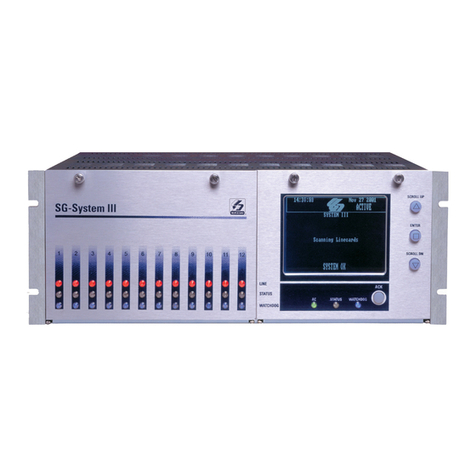
Sur-Gard
Sur-Gard SG-System III User manual
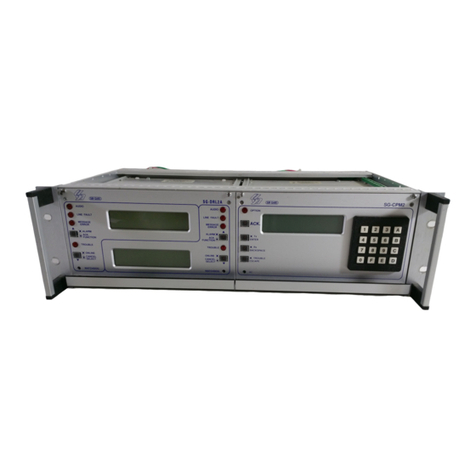
Sur-Gard
Sur-Gard SG-MLR2-E User manual
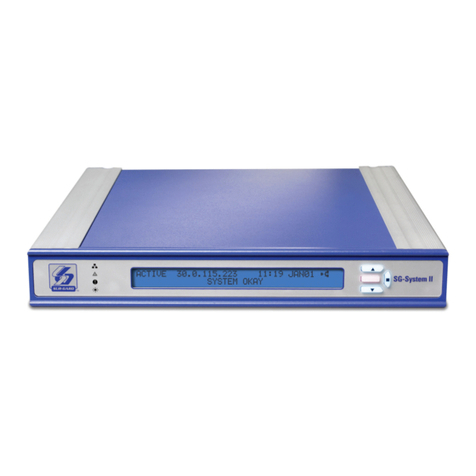
Sur-Gard
Sur-Gard SG System II User manual
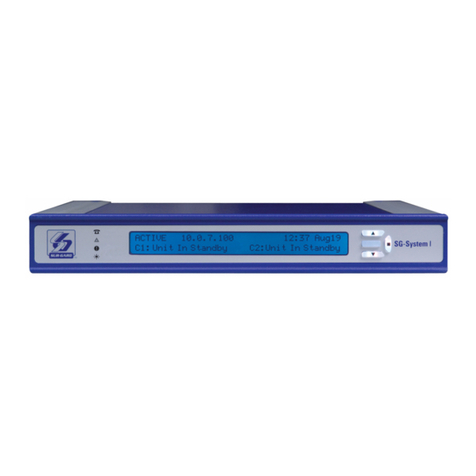
Sur-Gard
Sur-Gard System I User manual
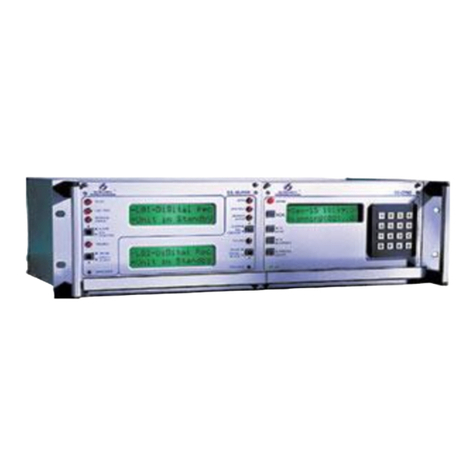
Sur-Gard
Sur-Gard SG Security Communications MLR2-DG User manual
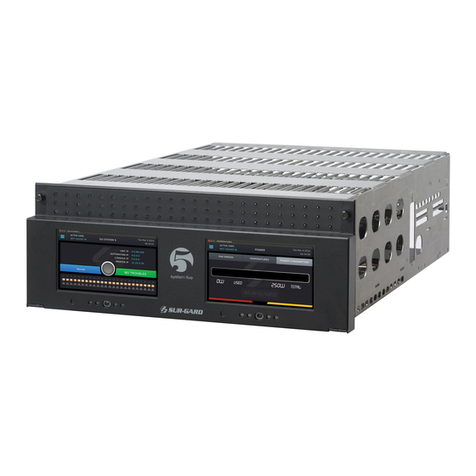
Sur-Gard
Sur-Gard System Five User manual
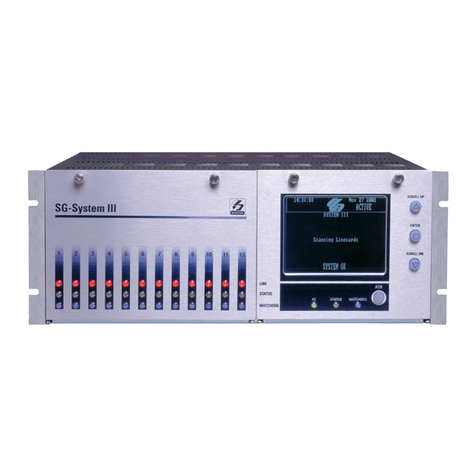
Sur-Gard
Sur-Gard System III User manual
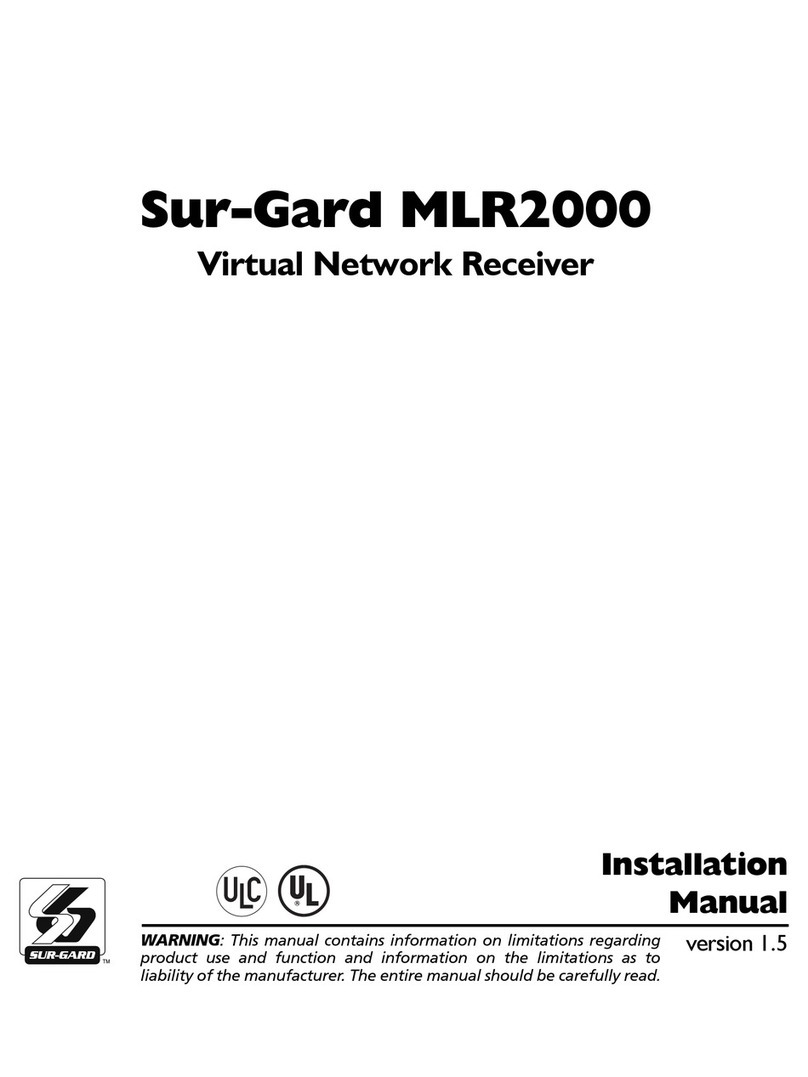
Sur-Gard
Sur-Gard MLR2000 User manual
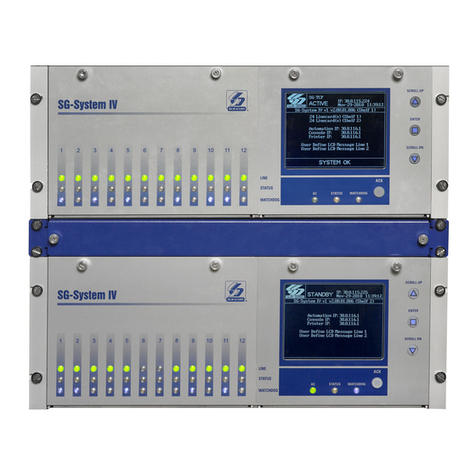
Sur-Gard
Sur-Gard SG-System IV User manual
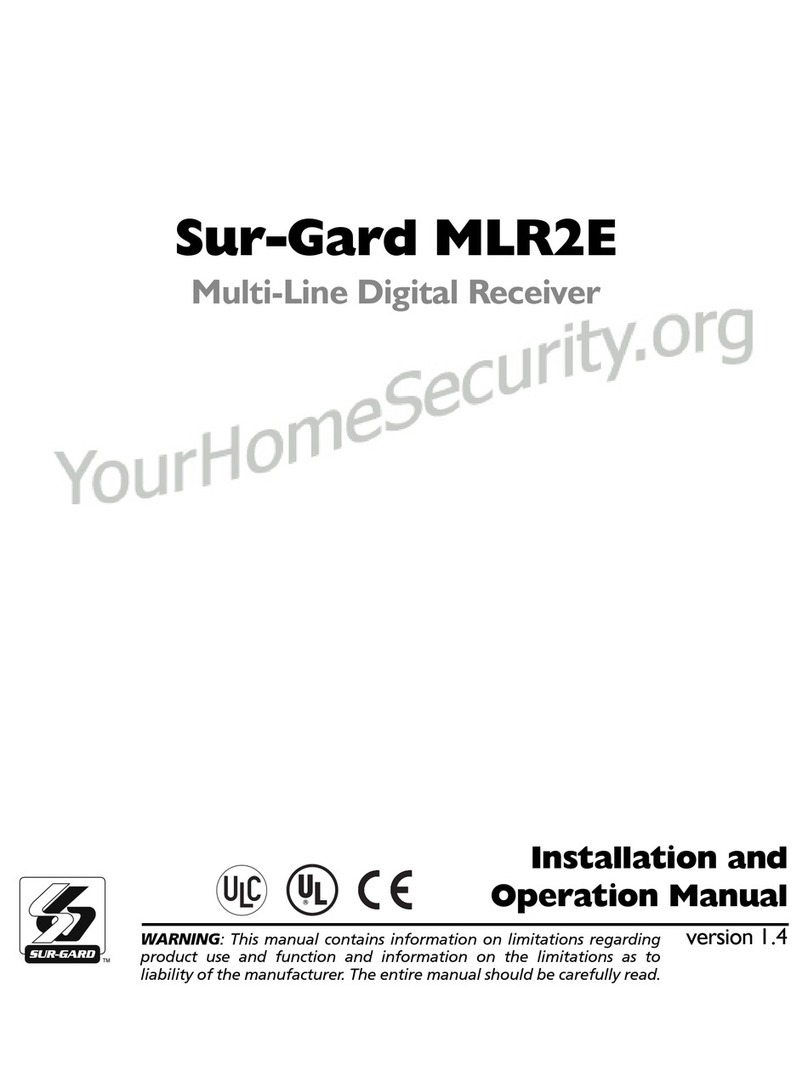
Sur-Gard
Sur-Gard MLR2E User manual
